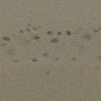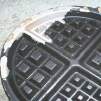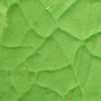
Surface preparation is the first step to the flawless performance you have come to expect from DuPont™ Teflon® industrial coatings. Many coating failures can be traced back to poor surface preparation. Here are some common coating problems that can be fixed by properly preparing the substrate’s surface.

Air bubble pops:
This is called outgassing, and can be prevented by preheating the part to 250°F before applying the coating. Click here to read more about outgassing.

Crater-like holes:
These are called fish eyes, and can be caused by contaminants in the coating or on the substrate. This could even be grit from blasting that wasn’t totally removed. Make sure the spray area and substrate are completely contaminant-free before spraying. Click here to read more about fish eyes.

Substrate adhesion failure:
If the coating is coming off of the substrate, it could be because the blast profile is not deep enough or there are contaminants under the coating. Blast profiles of at least 2.5 microns are recommended, and profiles between 5.1 – 6.5 microns are frequently used. Always be careful to remove all of the blast media from the substrate before spraying. To make sure all grit has been removed, pre-bake the part at the coating’s cure temperature or higher.

Mudcracking:
Mudcracking is when the finished coating looks like the bottom of a dry, cracked pond. This can be caused by too severe grit blasting, wire brushing, or sanding that causes pits and scratches in the substrate’s surface. When sprayed, the coating will flow into the depressions, causing cracks in the cured coating.
If you still have any trouble applying your coatings, call 302-366-8530 to talk to a Teflon® technical representative.